Nikolay Gulaev. Forgotten ace
And if Nikolay Gulayev was inferior to some Soviet aces by the number of personally shot down aircraft, then by his effectiveness — the ratio of the number of enemy aircraft shot down by the number of air battles conducted — he was the best fighter pilot of World War II among all the warring countries. According to the calculations of researchers, Ivan Kozhedub, this indicator of efficiency was 0,5, the famous German ace Eric Hartman - 0,4, while Gulayev - 0,8. Almost every air battle ended with a downed enemy aircraft. Nikolai Gulayev was a super productive Soviet ace. Three times in one day, he managed to shoot down the enemy's 4 at once, twice - on the 3 of the aircraft and 7 once - two enemy vehicles per day.
The future pilot-pilot Nikolai Gulayev was born on February 26 of the year 1918 in the village of Aksayskaya (today it is the city of Aksai in the Rostov region) in a family of ordinary workers who are Russian by nationality. After graduating from 7 classes of junior high school and school of trade schools (factory apprenticeship), Gulayev worked for some time as a mechanic at a plant in Rostov. At the same time, like many Soviet young men, Nikolay Gulayev was filled with love for the sky, during the day he worked at the enterprise, and in the evenings he attended classes at the flying club. In many ways, these studies and predetermined his fate.
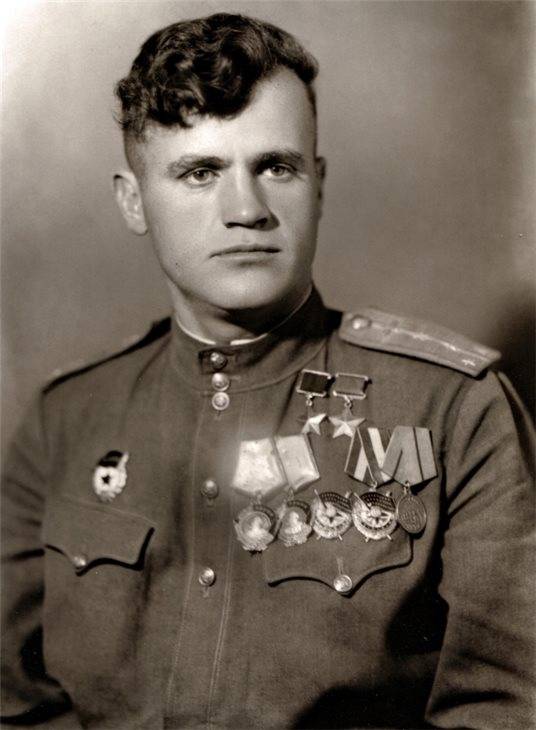
In 1938, Gulaev was drafted into the Red Army, while classes in the flying club helped him in the army. He was sent for further training in Stalingrad aviation School, which he successfully graduated in 1940. The future World War II was met by the future ace pilot as part of air defense aviation. The regiment, in which Gulaev served, provided protection for an industrial facility located far from the front line, so his combat debut was delayed until August 1942.
The first star on board the Gulaev fighter appeared 3 August 1942 of the year. He shot down his first plane in the sky near Stalingrad. Already his first combat mission was unusual. The pilot, who did not have access to making flights at night, at that time, arbitrarily raised his fighter into the night sky, where he shot down a German bomber Heinkel-111. In the first battle in non-standard conditions for himself and without the help of searchlights, he shot down an enemy aircraft. For the unauthorized departure of a young officer, he was “rewarded” with a reprimand, but also presented a reward, and then he was promoted to the rank.
The fighter pilot Nikolai Gulayev was especially distinguished during battles in the Kursk Bulge area near Belgorod. Here there were several super-successful battles with his participation. In the very first fight in this direction 14 of May 1943, reflecting the enemy's raid on the Grushka airfield, Gulayev single-handedly engaged in combat with three Ju-87 dive bombers, which were covered by the 4 fighter Me-109. The Soviet ace approached the leading bomber at low altitude and hit him in the first line, the shooter of the second bomber had time to open fire, but Gulayev shot down him too. After that, he tried to attack the third Junkers, but he ran out of ammo, so he decided to ram the enemy. With the left wing of his Yak-1 fighter, Gulayev hit the right plane of the Ju-87, after which he fell apart. From the impact, the Yak-1 went into a corkscrew, the pilot managed to return the car’s handling to the ground and land the plane near the leading edge in the location of our rifle division. Arriving at the regiment from the departure, in which three bomber was shot down, Nikolay Gulayev again flew on a combat mission, but on another plane. For this feat of his, he was awarded the Order of the Red Banner.
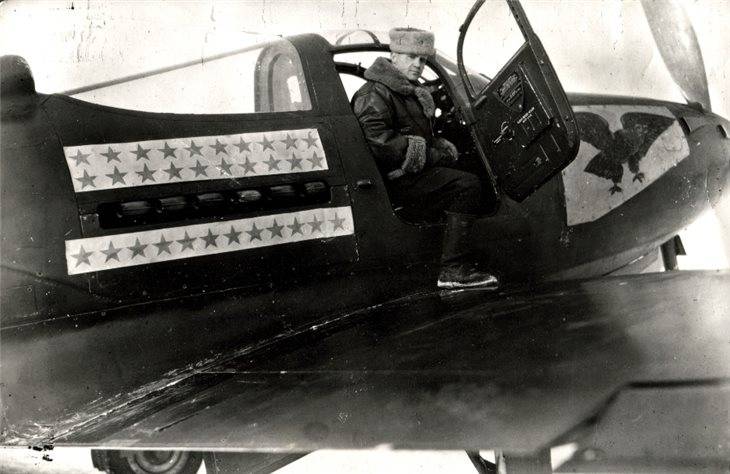
At the beginning of July, the four fighters, led by Nikolai Gulayev, carried out a sudden and very bold attack on a large group of enemy aircraft, in which there were 1943 machines, in early July. Having upset the enemy's battle formations, the fighter pilots were able to shoot down the 100 bomber and the 4 fighter, after which all four returned safely to their airfield. On the same day, the link of Gulayev made several more sorties, shooting down a total of 2 enemy aircraft.
Already 9 July 1943, Nikolai Gulaev makes his second air ram in the Belgorod region. After that, he had to leave his plane on a parachute. July 1943 of the year proved to be extremely productive for Gulayev. The following information was recorded in his flight book for this month: July 5 - 6 sorties, 4 victories, July 6 - Focke-Wulf 190 was shot down, July 7 - the enemy's 3 was shot down in a group, July 8 - Me was shot down -109 ", 12 July - two bomber" Yu-87 "shot down.
A month later, he retrained for a new fighter, the Aerocobra, and on the first flight he shot down a German bomber, and literally two days later another bomber - Ju-88. Already then it was possible to say that the list of his victories is not characteristic of most of the pilots of the front aviation, the list of victories of which consisted mainly of enemy fighters. It should be remembered that Nikolai Gulayev was almost never in the so-called “free hunting” mode, which, with the proper skill of the pilots, and the skill of Gulayev, of course, was abundant, allowed to significantly increase the air victories. Gulaev’s combat missions mainly consisted in covering ground targets: airfields, railway junctions, crossings.
On September 28, the senior lieutenant Nikolai Dmitrievich Gulaev, Deputy Commander of the 1943 Fighter Aviation Regiment (27 Fighter Aviation Division), was awarded the title Hero of the Soviet Union with the award of the Order of Lenin and the Gold Star medal. By that time, he had already made 205 combat missions and personally shot down 95 enemy planes and another 13 vehicles in the group.
At the beginning of 1944, Gulaev already commands a squadron. Together with his pilots, he takes part in the battles for the liberation of Right-Bank Ukraine. In the spring of 1944, he conducts his most effective air battle. In the sky over Romania over the Prut River, Nikolai Gulayev, led by six P-39 fighters, the Aircobra is attacking a large group of enemy bombers - 27 vehicles, accompanied by 8 fighters. In four minutes of the battle, Soviet pilots shot down 11 of enemy aircraft, of which Nikolay Gulayev personally shot down 5.
30 of May 1944 of the year over Skulyanami Nikolai knocks down the 4 of the enemy's aircraft in one day, while the bomber U-87 and the fighter Me-109 he knocks down in one battle. In the same battle, the Soviet ace himself was seriously wounded in his right arm. Concentrating all his willpower, he managed to bring the fighter to his aerodrome, put the car in the car, pulled into the parking lot and lost consciousness here. The hero came to himself only in the hospital, where he had an operation.
1 July 1944, the year of guard captain Nikolai Gulayev was awarded the second star of the Hero of the Soviet Union. He found out about the next award, returning from a combat departure. The famous ace finished his combat work on the front in August 1944, when, despite the protests, he was sent to study at the academy. This was the desire of the leadership of the country, which wanted to preserve the color of our aircraft, as well as to give officers-heroes the opportunity to receive education at the Air Force Academy. By that time, he had already managed to personally shoot down 55 of enemy aircraft in 69 air battles, which allowed him to set an absolute record of combat effectiveness for a fighter pilot. “It was a truly outstanding pilot,” RIA told reporters. News aviation historian Nikolai Bodrikhin. “For example, he scored more victories over twin-engined aircraft than anyone else. The same Kozhedub shot down only 5 of such aircraft, and on the account of the Gulayevs there were more than 10 "twin engines".
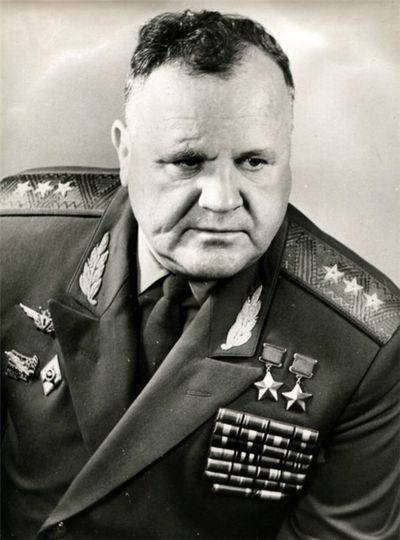
Despite his truly outstanding successes in the sky, Nikolai Gulayev failed to gain the glory that went to his eminent colleagues - two Soviet aces - Ivan Kozhedub and Alexander Pokryshkin. Historians believe that in many ways the reason was the difficult nature of the hero. Some sources said that Gulayev was already assigned to the third star of the Hero of the Soviet Union already in 1944, however, the show was “turned back”, as the pilot allegedly gave a riot in a Moscow restaurant. This did not prevent the hero pilot in 1950 from graduating from the N. Ye. Zhukovsky Air Force Engineering Academy, and in the 1960 year to the Military Academy of the General Staff. At the same time, in the post-war years, Gulayev was one of the first Soviet pilots to master the control of a jet fighter.
After the end of World War II, Nikolai Gulayev at various times commanded the aviation division in Yaroslavl, and then managed to reach the commander of the 10 Army of Air Defense with headquarters in Arkhangelsk. The fellow hero pilots of the 10 Air Defense Army recalled that the general did not perceive his life in the north of the country as a link and was always fully devoted to military service - the volume of tasks assigned to him was enormous. According to the memoirs of colleagues, among the officers of his army, there were rumors that Gulayev had high-ranking ill-wishers in Moscow. He could have become the commander-in-chief of the air defense forces, however, someone slowed down his career advancement. It may have played a role frontline straightness Nikolai Gulayev and his unwillingness to kowtow in front of the senior in rank.
Colonel Georgy Madlitsky, a former staff officer of the 10 Army, said: “Gulayev had the highest authority, although he did not like to talk about his military exploits. On the one hand, he was a very demanding and tough officer who couldn’t tolerate idlers and slobs in the army. On the other hand, he treated people with great attention, trying in every way to help them, to improve their living conditions and service. ” “Just imagine, in 1968, he personally invited Vladimir Vysotsky to our“ village ”, who spoke at the Officers' Club, it was a big and memorable event,” recalls George Madlitzky.
Nikolai Gulayev commanded the 10 army of air defense from 1966 to 1974 year, by this time he was already a colonel-general. In 1974, he was appointed to the post of head of the combat training department of the country's air defense forces. Formally, this could be considered an increase, but in fact meant the honorary resignation of the general. This event was preceded by an unpleasant episode. In 1973, Norwegian environmentalists turned to Moscow, reporting that the 10 Army personnel were poaching and shooting polar bears. In fact, according to Georgy Madlitsky, Gulayev ordered to shoot bears when they approached parts after two incidents of polar bears attacking soldiers. As a result, Gulayev was summoned to Moscow for a party committee, where the general again demonstrated his character, not restraining himself and saying: "I ask those who were at the front to stand up." Units rose ... ".
Colonel-General Nikolai Dmitrievich Gulaev retired in 1979 and lived in Moscow. He died on September 27, 1985 at the age of 67. Today, in the homeland of the hero in the city of Aksai, there is a street named after him, and a bust of the hero is also installed in Aksai. Not so long ago, on the house in Arkhangelsk, where the Colonel General lived when he led the 10th Air Defense Army, veterans of this army installed a memorial plaque. Every year on May 9, fresh flowers appear near it.
Information sources:
https://ria.ru/defense_safety/20180226/1515171440.html
http://www.aif.ru/society/people/neistovyy_gulaev_istoriya_samogo_effektivnogo_letchika_vtoroy_mirovoy_voyny
http://gorodskoyportal.ru/news/russia/42611329
Open source materials
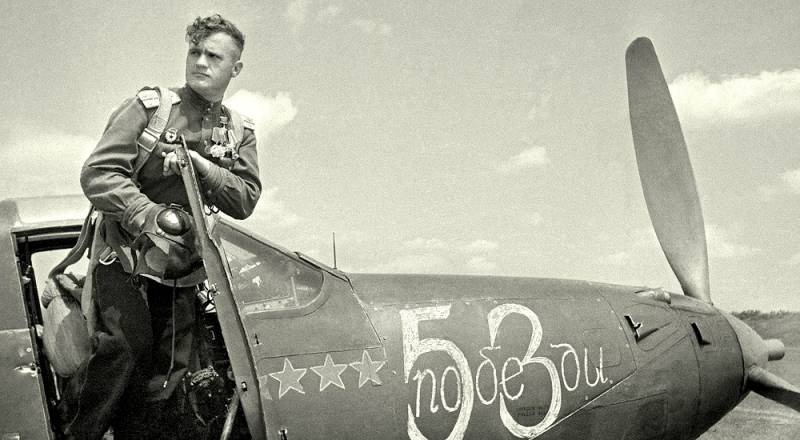
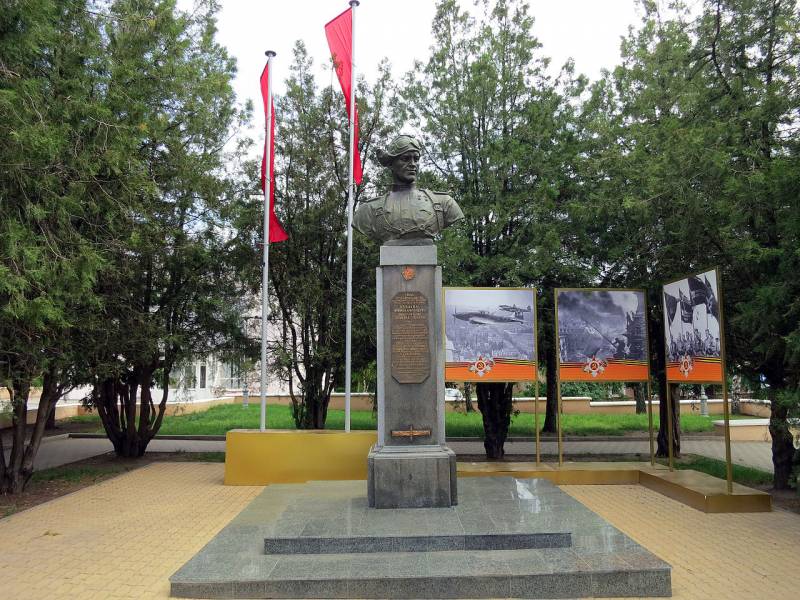
Information